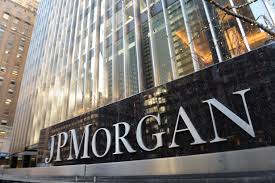Bank Branches Are Closing At A Record Pace. Here’s Why JPMorgan Chase Is Opening More

Lower-income communities often become “food deserts,” areas where supermarket chains decide they can’t or won’t do business—leaving residents without reliable sources for good groceries. That situation has an equally unhealthy financial parallel: A town or neighborhood can become a “banking desert,” with no branches where borrowers can turn for business loans or mortgages.
Banking deserts are more common than they used to be, and that adds a layer of significance to JPMorgan Chase’s decision, announced in January, to open 400 new bank branches in the U.S. over the next five years, adding to the roughly 5,100 branches in the current Chase Bank network. “We asked ourselves: At the 60,000-foot level, how do you build thriving communities?” Peter Scher, head of corporate responsibility, told Fortune in a recent interview. Adding branches, he adds, “is part of a very self-supportive circle that leads to more economic growth.”
[Read Fortune’s 2018 Change The World list.]
The number of bank branches in the U.S. has declined steadily since the financial crisis, from a peak of around 97,000 in 2007 to an estimated 89,300 in 2017, according to real-estate services firm JLL, and the pace of the decline is accelerating. The drop-off, originally precipitated by Great Recession-era cost-cutting, is now largely driven by technology; as more people do more of their banking online, fewer feel the need for access to a physical branch.
But the pullback hasn’t come without consequences, particularly for small businesses. For business owners, the absence of branches and the face-to-face relationships that go with them can complicate everything from getting financing to depositing earnings to making payroll, and local economies can suffer as a result. (The Wall Street Journal has done some great reporting on this topic, including a December feature with the memorable headline “Goodbye, George Bailey”; subscription required.)
That’s the dynamic that JPMorgan Chase, No. 18 on Fortune’s Change The World list this year, is aiming to reverse. The branch-expansion initiative is part of a broader push by the bank to support entrepreneurship and economic revitalization in underserved neighborhoods all over the country, as exemplified by its $ 150 million investment in Detroit’s economy and its Entrepreneurs of Color Funds, which have rolled out in three new cities this year.
Branches with ‘a multiplier effect’
The first branches under the new program will open between October and the end of the year. Those will include three branches in Washington, D.C.’s Wards 7 and 8, where the bank last year announced a broader $ 10 million campaign to support small-business development and affordable housing.
Thasunda Brown Duckett, CEO of consumer banking, tells Fortune that putting branches in low-to-moderate-income communities will help local businesses and homeowners cultivate relationships with the bank that will help them grow. She also notes that bank branches have a “multiplier effect” when they come into a market. “The real estate team, the cleaning team, the ATM maintenance, those generate jobs,” she explains. “And when we are the anchor tenant, that creates a confidence that can attract other businesses.”
Just as important, the new branches will directly create jobs; JPMorgan Chase estimates that the 400 new branches will employ about 3,000 people nationwide. Duckett and Scher say that the bank will collaborate with local nonprofits to help train job-seekers with the right skills for bank customer-service jobs, so that the branches can do most of their hiring locally. “Digital skills, building rapport, presentation skills—even entry-level jobs require all of these,” says Duckett. “Getting ahead of them with training will really help the community.”
